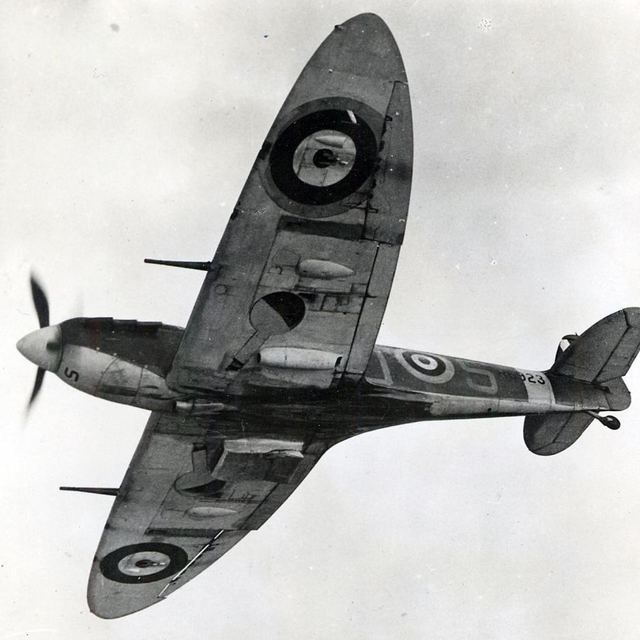Hidden Burmese Spitfires to be excavated - ABC News
Posted: Mon Oct 22, 2012 1:32 am
Hidden Burmese Spitfires to be excavated
Updated Fri Oct 19, 2012 8:54am AEDT
Dozens of rare Spitfire fighter planes buried in Burma during World War II are to be dug up under an agreement between the Burmese government and a British aviation enthusiast.
The iconic single-seat aircraft are believed to have been hidden unassembled in crates by the former colonial power to prevent them falling into Japanese hands almost seven decades ago.
Local businessman Htoo Htoo Zaw, who is involved with the project, says the excavation is expected to take about two years.

"We expect to dig up about 60 fighters," he said.
Based on a survey of hundreds of witnesses, the team plans to dig in three locations in Rangoon, northern Kachin state and central Mandalay.
If successfully excavated, some of the Spitfires are expected to be returned to Britain, which ruled Burma until independence in 1948 but was temporarily forced out of much of the country in 1942 by invading Japanese forces.
"We want to strengthen relations between Britain and our country and benefit millions of people in the world who want to see Spitfires," Mr Zaw said.
The dig is the result of a more than a decade-long search of former air force bases in Burma by British farmer and aviation aficionado David Cundall using radar technology.
"It took me more than 15 years, but I finally found them," Mr Cundall told British newspaper The Daily Telegraph earlier this year.
"I'm only a small farmer, I'm not a multi-millionaire, and it has been a struggle.
"Spitfires are beautiful aeroplanes and should not be rotting away in a foreign land. They saved our neck in the Battle of Britain and they should be preserved.
"They were just buried there in transport crates. They were waxed, wrapped in greased paper and their joints tarred. They will be in near-perfect condition."
About 20,000 Spitfires were built by Britain from 1938 to 1948.
The planes captured the imagination of the British public during the Battle of Britain, when the Royal Air Force prevented the German Luftwaffe from invading in 1940.
Today, just a few dozen are still in flying condition.
http://www.abc.net.au/news/2012-10-18/h ... ma/4321436
Updated Fri Oct 19, 2012 8:54am AEDT
Dozens of rare Spitfire fighter planes buried in Burma during World War II are to be dug up under an agreement between the Burmese government and a British aviation enthusiast.
The iconic single-seat aircraft are believed to have been hidden unassembled in crates by the former colonial power to prevent them falling into Japanese hands almost seven decades ago.
Local businessman Htoo Htoo Zaw, who is involved with the project, says the excavation is expected to take about two years.

"We expect to dig up about 60 fighters," he said.
Based on a survey of hundreds of witnesses, the team plans to dig in three locations in Rangoon, northern Kachin state and central Mandalay.
If successfully excavated, some of the Spitfires are expected to be returned to Britain, which ruled Burma until independence in 1948 but was temporarily forced out of much of the country in 1942 by invading Japanese forces.
"We want to strengthen relations between Britain and our country and benefit millions of people in the world who want to see Spitfires," Mr Zaw said.
The dig is the result of a more than a decade-long search of former air force bases in Burma by British farmer and aviation aficionado David Cundall using radar technology.
"It took me more than 15 years, but I finally found them," Mr Cundall told British newspaper The Daily Telegraph earlier this year.
"I'm only a small farmer, I'm not a multi-millionaire, and it has been a struggle.
"Spitfires are beautiful aeroplanes and should not be rotting away in a foreign land. They saved our neck in the Battle of Britain and they should be preserved.
"They were just buried there in transport crates. They were waxed, wrapped in greased paper and their joints tarred. They will be in near-perfect condition."
About 20,000 Spitfires were built by Britain from 1938 to 1948.
The planes captured the imagination of the British public during the Battle of Britain, when the Royal Air Force prevented the German Luftwaffe from invading in 1940.
Today, just a few dozen are still in flying condition.
http://www.abc.net.au/news/2012-10-18/h ... ma/4321436